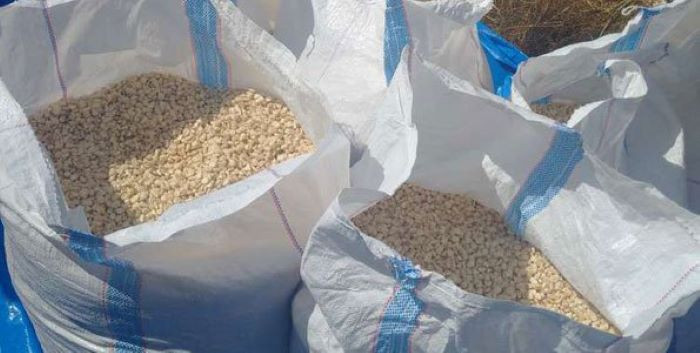
BY TONDERAYI MATONHO
While Trans-frontier Conservation Areas (TFCAs), which re-established the movement of wildlife within larger landscapes, minus fencing, are a welcome concept in recent years in boosting economic development and biodiversity conservation, the absence of a formal policy on animal disease control has negative impacts on public health, agriculture, commerce and even conservation itself, experts say.
“Lack of a formal policy on animal disease control is a major problem arising from TFCAs and may be a factor for massive loss of domestic animals especially with reference to Zimbabwe”, said Steve Kasere, a seasoned wildlife management expert, in an interview recently.
TFCAs were also intended to facilitate effective and coordinated management of wildlife by stakeholders in respective countries concerned, especially countries in southern Africa.
However, Kasere noted that it remains to be seen whether this coordination is possible given different economic challenges facing different countries involved and absence of a formal policy.
“For TFCAs to work, each of the countries must contribute effectively towards anti-poaching activities in their respective boundaries,” he said.
“With little benefits accruing to communities, herds of domestic animals have more frequent contact with wildlife and people leading to easy transmission of animal-to-animal diseases”, he added.
Furthermore, he pointed out that: “TFCAs offer growth in tourism but unfortunately, rural communities are still not benefiting much considering that the tourism ventures are capital-oriented and therefore tend to benefit investors of capital rather than communities.
- Chamisa under fire over US$120K donation
- Mavhunga puts DeMbare into Chibuku quarterfinals
- Pension funds bet on Cabora Bassa oilfields
- Councils defy govt fire tender directive
Keep Reading
“In other words, benefit-sharing ratios make a mockery of community participation in the projects since income accruing to individual households are so insignificant if any.
“They should be more people-centered rather than being wildlife and capital-centred”, he said.
With TFCAs in place, wildlife, domestic animals and people are coming into unprecedented contact. The recent threat of transmittable diseases like foot-and-mouth, must be urgently addressed, experts urge. Other transmittable diseases include malaria, anthrax and trypanosomiasis (nagana — sleeping sickness of cattle) play a significant role in the overall development within TFCAs.
“When it comes to animal health programmes and policies in trans-boundary landscapes where domestic as well as wild animals cross international borders, being timeous with the right decisions becomes even more critical”, said Willie Nduku, a conservation expert in a recent interview.
“There is trade expansion throughout the region (SADC), the Common Market for Eastern and Southern Africa and rapid globalization, causing these issues to increasingly affect the development dimensions of many African countries.
“Against all this, there is still no formal policy on animal health and disease control for the trans-frontier conservation areas still under development”, he noted.
Examples of TFCAs in the region include, the Great Limpopo Trans-frontier zone, encompassing the Kruger National Park (South Africa), Gonarezhou National Park in both Zimbabwe and Mozambique, to the south-east, Mana-Pools National Park along the Zambezi River on both sides of Zimbabwe and Zambia and Chobe Wildlife Enclave, covering Botswana, Namibia and Zimbabwe.
Recently, Botswana authorities had to shoot a sizeable number of Zimbabwean cattle on sight which had crossed the other side of the boarder, fearing transmission of the dreaded foot-and-mouth disease. The Animal Health for the Environment and Development (AHEAD) initiative, also notes that the management of wildlife and livestock diseases, including zoonoses, bovine tuberculosis and rabies that can be transmitted between animals and people within larger landscapes, remain unresolved and is an issue of major concern for livestock production, export markets and public health.
“With the recent rapid growth in global tourism, the trans- boundary management of natural resources, particularly wildlife, has become a major focus of attention in southern Africa”, notes a recent statement from AHEAD under the auspices of the World Conservation Union.
“Whatever the potential of wildlife-based tourism to generate wealth in such areas, the current reality is that small-scale agro-pastoralists living in adjacent communal lands depend on livestock for their livelihoods,” it further notes.
Nduku said the need to balance livelihoods of agro-pastoralists and environmental security with the development of alternative land uses provide a complex set of development issues.
“In such cases, an integrated approach offers the most promising way to address these issues, one in which the well-being of wildlife and ecosystems, domestic animals and local people are assessed holistically, through a ‘one health’ lens”, he said.
Charlene Hewitt, another conservation expert now based in Victoria Falls, said: “One could argue that the extensive fencing that has separated wildlife and livestock since the late 1950s has in many ways been the simplest approach to minimizing disease problems.
“However, this fencing blocked key migratory pathways that wildlife have used for thousands of years in times of thirst and hunger”, she said.
In addition, she pointed out that conservationists are understandably excited about the possibility of more land for wildlife and benefits linked to sound stewardship of biodiversity.
“However, this excitement should be tampered by the fact that much remains unknown as the TFCA initiative should proceed with caution in the face of ecosystems and processes that are not fully understood”, she said.
Furthermore, experts assert that wildlife corridors, for example, can serve not only as biological bridges for wildlife, but also for vectors and the pathogens they carry. Thorough assessments of disease risks should be made before hand in areas that may have developed different types of pathogen or parasite loads over time to avoid spreading.
Through AHEAD , veterinarians, ecologists, biologists, social and economic scientists, agriculturalists, wildlife managers, public health specialists and others from across eastern and southern Africa, have been constantly brought together to share ideas on how wildlife conservation and development could be mutually reinforcing.
“The need for a holistic approach could not be more urgent. In parts of southern Africa, boundary fences have already come down, allowing wildlife and livestock access to areas and to each other for the first time in decades”, notes AHEAD.
However, while this represents a potential milestone for conservation and the nature-based tourism revenues it supports, it also demands a closer look.
“What effects are these trans-frontier areas having on the health and sustainability of wildlife, domestic animals and human communities”? queried Nduku.
“Whether looking at a large, complex land-use matrix such as a TFCA or at a small, isolated protected area surrounded by human activities, these issues merit more attention than either the conservation or development communities have given them to date”, he noted.
With a formal policy in place, southern African TFCAs could provide excellent models within which to study and mitigate the political and social tensions between biodiversity conservation and livestock agriculture in the broader region. In doing so, will effectively be critical to successful, sustained biodiversity conservation, public health and agri-biosecurity.











